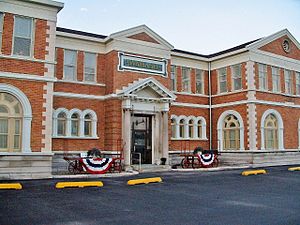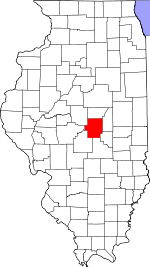
DeWitt County is a county located in the U.S. state of Illinois. As of the 2020 census, the population was 15,516. Its county seat is Clinton. The county was formed on March 1, 1839, from Macon and McLean counties. The county was named in honor of the seventh Governor of New York State, DeWitt Clinton.
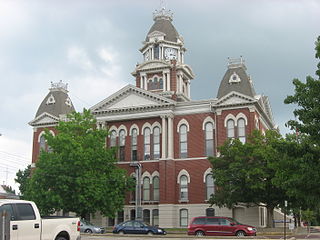
Shelby County is a county located in the U.S. state of Illinois. According to the 2020 census, it had a population of 20,990. Its county seat is Shelbyville.

Piatt County is a county in Illinois. According to the 2020 United States Census, it had a population of 16,673. Its county seat is Monticello.

Moultrie County is a county in the U.S. state of Illinois. According to the 2020 United States Census, its population was 14,526. Its county seat is Sullivan. The name is pronounced as in "mole tree", unlike the pronunciation of its namesake, the South Carolinian Revolutionary War hero William Moultrie.

Fayette County is a county located in the U.S. state of Illinois. As of the 2020 census, the population was 21,488. Its county seat is Vandalia, the site of the Vandalia State House State Historic Site. Ramsey Lake State Recreation Area is located in the northwestern part of this county.
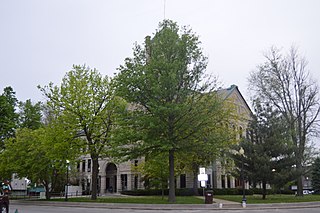
Christian County is a county located in the U.S. state of Illinois. As of the 2020 census, the population was 34,032. Its county seat is Taylorville.

Argenta is a village in Macon County, Illinois, United States, whose population was 913 at the 2020 census. It is included in the Decatur, Illinois Metropolitan Statistical Area.
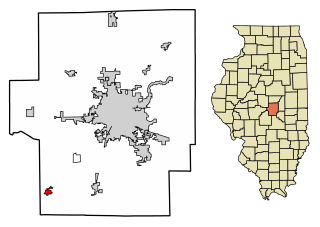
Blue Mound is a village in Macon County, Illinois, United States. The population was 1,133 at the 2020 census. It is included in the Decatur, Illinois Metropolitan Statistical Area.

Decatur is the largest city in and the county seat of Macon County, Illinois, United States. The city was founded in 1829 and is situated along the Sangamon River and Lake Decatur in Central Illinois. As of the 2020 census, it had a population of 70,522. It is the seventeenth-most populous city in Illinois. Decatur has an economy based on industrial and agricultural commodity processing and production. The city is home to Millikin University and Richland Community College.

Forsyth is a village in Macon County, Illinois, United States. Its population was 3,734 at the 2020 census, up from 3,490 in 2010. It is included in the Decatur, Illinois Metropolitan Statistical Area.
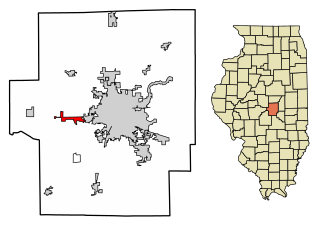
Harristown is a village in Macon County, Illinois, United States. The population was 1,310 at the 2020 census. It is included in the Decatur, Illinois Metropolitan Statistical Area.

Long Creek is a village in Macon County, Illinois, United States. As of the 2020 census there were 1,261 people. It is included in the Decatur, Illinois Metropolitan Statistical Area.

Macon is a town in Macon County, Illinois, United States whose population was 1,177 at the 2020 census. It is included in the Decatur, Illinois Metropolitan Statistical Area and lies 9 miles (14 km) south of Decatur.

Maroa is a city in Macon County, Illinois, United States. Its population was 1,577 at the 2020 census, down from 1,801 in 2010. It is included in the Decatur, Illinois Metropolitan Statistical Area.

Niantic is a village in Macon County, Illinois, United States. Its population was 612 at the 2020 census, down from 707 in 2010. It is included in the Decatur, Illinois Metropolitan Statistical Area.

Oreana is a village in Macon County, Illinois, United States, which had a population of 891 at the 2020 census. It is included in the Decatur, Illinois Metropolitan Statistical Area.

Warrensburg is a village in Macon County, Illinois, United States. Its population was 1,110 at the 2020 census, down from 1,201 in 2010. It is included in the Decatur, Illinois Metropolitan Statistical Area. Warrensburg was established in 1841.

Dalton City is a village in Moultrie County, Illinois, United States. It is in the center of the state near the Macon County line. The population was 454 at the 2020 census, down from 544 in 2010.

Mount Zion is a village in Macon County, Illinois, United States. The population was 6,019 at the 2020 census.
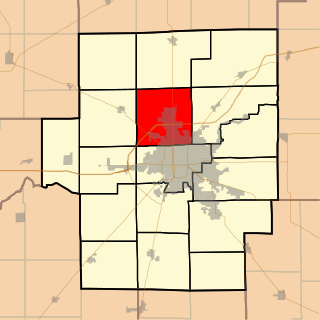
Hickory Point Township is located in Macon County, Illinois. As of the 2010 census, its population was 18,523 and it contained 8,562 housing units.
